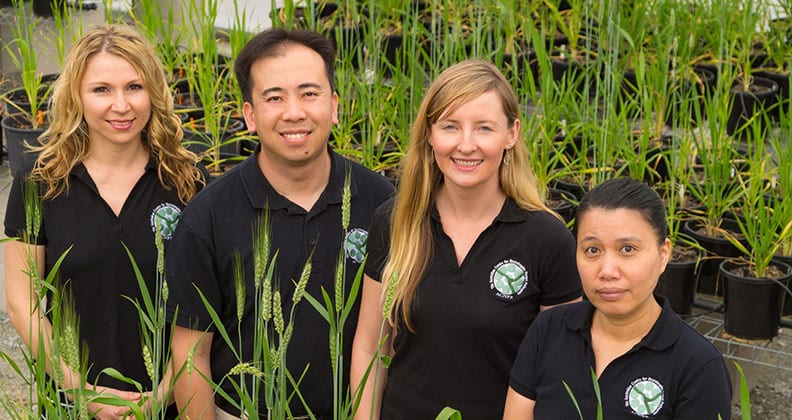A new approach to breeding disease-resistant wheat has named a Curtin University research team as finalists in the 2014 Australian Museum Eureka Prizes, within the sustainable agriculture category.
The discovery has led to less use of fungicides while effectively increasing the intensity of farming, with more crop per hectare, per millimetre of rainfall, and per kilogram of fertiliser used, bringing multi-million dollar savings to the agricultural industry.

The team, led by Professor Richard Oliver, Chief Scientific Officer of Curtin’s Centre for Crop and Disease Management – which is supported by the Grains Research and Development Corporation – developed a simple test that can clearly identify which wheat line is more resistant to two common diseases, in a matter of days.
“The diseases, tan spot and septoria nodorum blotch, cause annual wheat yield losses worth more than $300 million in Australia alone, and many more millions for the rest of the world,” Professor Oliver said.
“In the past, breeding for resistance was very time-consuming, with previous approaches often requiring three years of field trials in three different locations, using quantitative scoring of disease virulence.
“In just two weeks, a breeder can now identify if a plant carries a resistant gene or not, just by inoculating the seedling’s leaves with the toxin we discovered.”
In 2007 the team discovered a gene within the two fungal diseases that produced a toxin that made wheat susceptible to the disease.
Following this, they also showed that wheat’s sensitivity to the toxin correlated well with being susceptible to the disease, and conversely wheat’s insensitivity to the toxin correlated well with being resistant to the disease.
This discovery formed the basis of the simple test, which involves injecting the toxin into leaves and seeing if the disease is capable of latching onto the crop, and if it does, discarding that sensitive line from the selection process.
[youtube]http://www.youtube.com/watch?v=P5xM0D2UqtI[/youtube]
Professor Oliver said the impact of this research had already been seen in Western Australia.
“The area sown to disease sensitive wheat fell from 30 per cent in 2010 to 17 per cent in 2013, this equates to a saving of $50 to $100 million per annum in yield gains,” Professor Oliver said.
“Furthermore, the decreased use of fungicides will slow the development of resistance to these fungicides, which is a major concern to the agricultural industry and vital to improving sustainable agriculture.”
Professor Oliver said the research was still in its very early stages, but has enormous potential to be applied to legume crops, which are severely hampered by these diseases.
Winners of the 2014 Australian Museum Eureka Prizes will be announced on 10 September.



